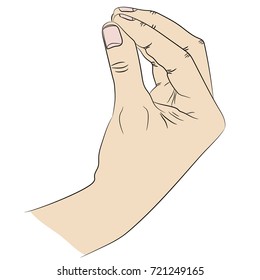project2-part 2-
Project 2 Part 1
power on/off=snap
comes from a way of getting someones attention

previous track = sweep
comes from a back and forth motion implying going “back”
next track= flick
Implies getting rid of something and has a negative connotation.
volume up= lift up gesture
implies to raise something up; using hands in an upward motion to lift things is commonly associated with raising volume.

volume down = push down gesture
implies to decrease something; using hands in a downward motion to push things down is commonly associated with lowering volume.

play= Italian hand shaking gesture
This gesture implies wanting more, having it associated with “play” to continue listening to music.

pause= chefs kiss
When a dish is finalized a chef expresses their satisfaction through the universally known gesture “chef’s kiss”. We applied this to pause because it signifies when one has been satisfied listening to music.

Minority Report Q’s – Madeline Farace
- Speculate on the future of the gestural interface. Will it become commonplace? Is it “better” than our current touch-based interfaces such as keyboards/mice or even touchscreens?
I Feel that gestural interfaces will become commonplace on a much smaller scale. I do not think that we all will have technology that requires us to have huge arm motions to operate the technology (as seen in the movie). The gestural interfaces that are moving off of touchscreens is where our society is taking us. I feel that this elevated touchscreen technology is better than the keyboard and mouse interface, and is the most “happy medium” that our technology will offer.
- Gesture-recognition technology is now available (see Leap, MYO, Kinect). Should these technologies be integrated into everyday computing? Should your laptop “see” your gestures? Would you want such an interface?
I personally would not want one of these interfaces, at least not how they are presenting now. The whole debate of if the cameras are on even though the light is off, is what makes me apprehensive to the idea. Constant surveillance is possible with this type of technology and I don’t think your laptop should “see” you. There are different places where these gesture recognition technology can be incorporated but everyday computing, I think will experience the same difficulties if not more with the interface.
- What makes gestural computing attractive in a film environment (new examples include the Iron Man series of films)? How does a gestural interface differ from a keyboard/mouse interface within a cinematic context? Why would Spielberg have chosen what he did for Minority Report?
What makes gestural computing attractive in a film environment is the “coolness” aspect and the audience’s ability to see what the character is clicking/ choosing to open on the computer. Gestural interfaces differ from a keyboard/mouse interface by using large gestures to manipulate interfaces that pop up graphically in front of the character. I feel that Spielberg chose this type of gestural interface to imply that they are in a futuristic world, to provide his characters with a certain level of “coolness”, and to easy show through the movie how the character is manipulating the interface.
project 2 wizard of ozing example
project 2 research – Madeline Farace
– Blogs on Readings for Project 2 – Interaction 1 – Madeline Farace –
What are Use Scenarios and Personas? https://web.archive.org/web/20150624071804/http://graphics.cs.columbia.edu/courses/csw4170/useScenariosAndPersonas.htm
A use scenario is a story or narrative that is used to help you explore the set of tasks and interactions required for your design. It describes the users goals, tasks, type of interaction, and constructs the sequence of events. An example of this is if you are in the technology world, pitching your story, one might have actors representing a buyer, seller, and paypal in order to show how their system would work.
A persona is an invented person that you use to represent a type of user in your use scenario. It allows you to concretely talk about them as users of your system. It helps to give each persona a name and personality because you can then ask yourself how they might handle a situation or deal with a particular interface. Having the personas different from each other shows a diverse range of people who might use your system. An example of this would be if I were designing an office help center, I might create three to five personas representing people in the office, such as the CEO, top manager, front desk receptionist, mail clerk, and a visitor.
In creating personas and use scenarios, you’re forced to think about the context and tasks of the design. Once you have personas and use scenarios, you can then start to design specific elements in your user interface, based on the requirements and interaction described in the use scenarios.
Hall’s cultural factors
http://changingminds.org/explanations/culture/hall_culture.htm
In a high-context culture, much is taken for granted because there are many contextual elements that help people to understand the rules. An example of a high- context contract is a French contract that tends to be short in length.
In a low-context culture, very little is taken for granted because there is less chance of misunderstanding particularly when visitors are present. An example of a low- context contract is an American lengthy contract one must look over and sign. An example of a low- context culture would be
Highly mobile environments where people come and go need lower-context culture. With a stable population, however, a higher context culture may develop.
High and Low Context
http://www.culture-at-work.com/highlow.html
High and low contexts are used to describe broad-brush cultural differences between societies.
High context refers to societies or groups where people have close connections over a long period of time. An American family dynamic is an example of a high context environment.
Low context refers to societies where people tend to have many connections but of shorter duration or for some specific reason. Cultural behavior and beliefs may need to be spelled out explicitly, an example of this would be a United States airport.
The structure of relationships and the main type of cultural knowledge differ between high and low contexts. High context relationships have dense, intersecting networks and long term relationships, while Low context relationships have loose, wide networks, and compartmentalized relationships. The main type of cultural knowledge for high context is patterns that are not fully conscious, and it is hard to explain if you are a member of that culture. Low context’s main type of cultural knowledge is explicit, and consciously organized.
Erving Goffman’s Dramaturgy
https://en.wikipedia.org/wiki/Dramaturgy_%28sociology%29
Dramaturgy is a sociological perspective used in accounts of social interaction in everyday life. The fundamental difference between Burke’s and Goffman’s view is that Burke believed that life was in fact theatre, whereas Goffman viewed theatre as a metaphor. It is argued that the elements of human interactions are dependent upon time, place, and audience. Goffman forms a theatrical metaphor in defining the method in which one human being presents itself to another based on cultural values, norms, and beliefs.
Dramaturgical perspective analyzes the context of human behavior. Suggesting that a person’s identity is not a stable and independent psychological entity, but rather, it is constantly remade as the person interacts with others. An example of this is an analyzation of how people live their lives like actors performing on a stage.


